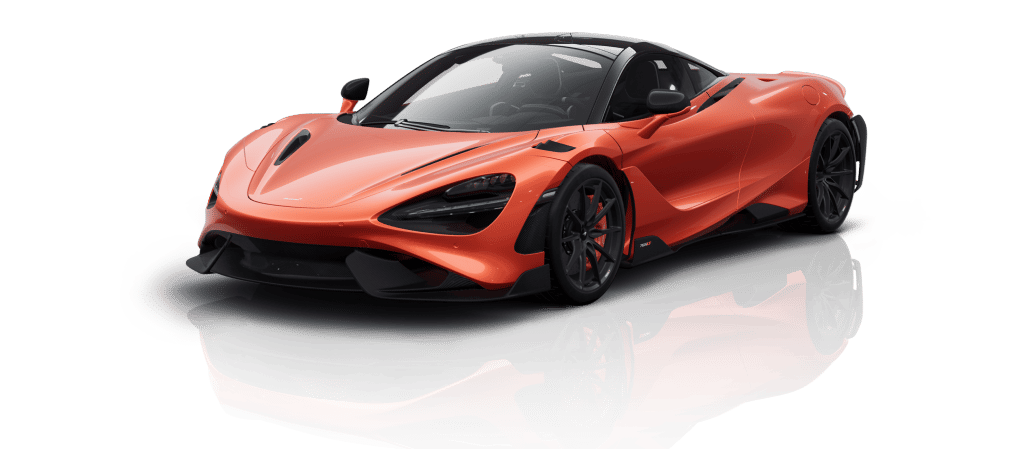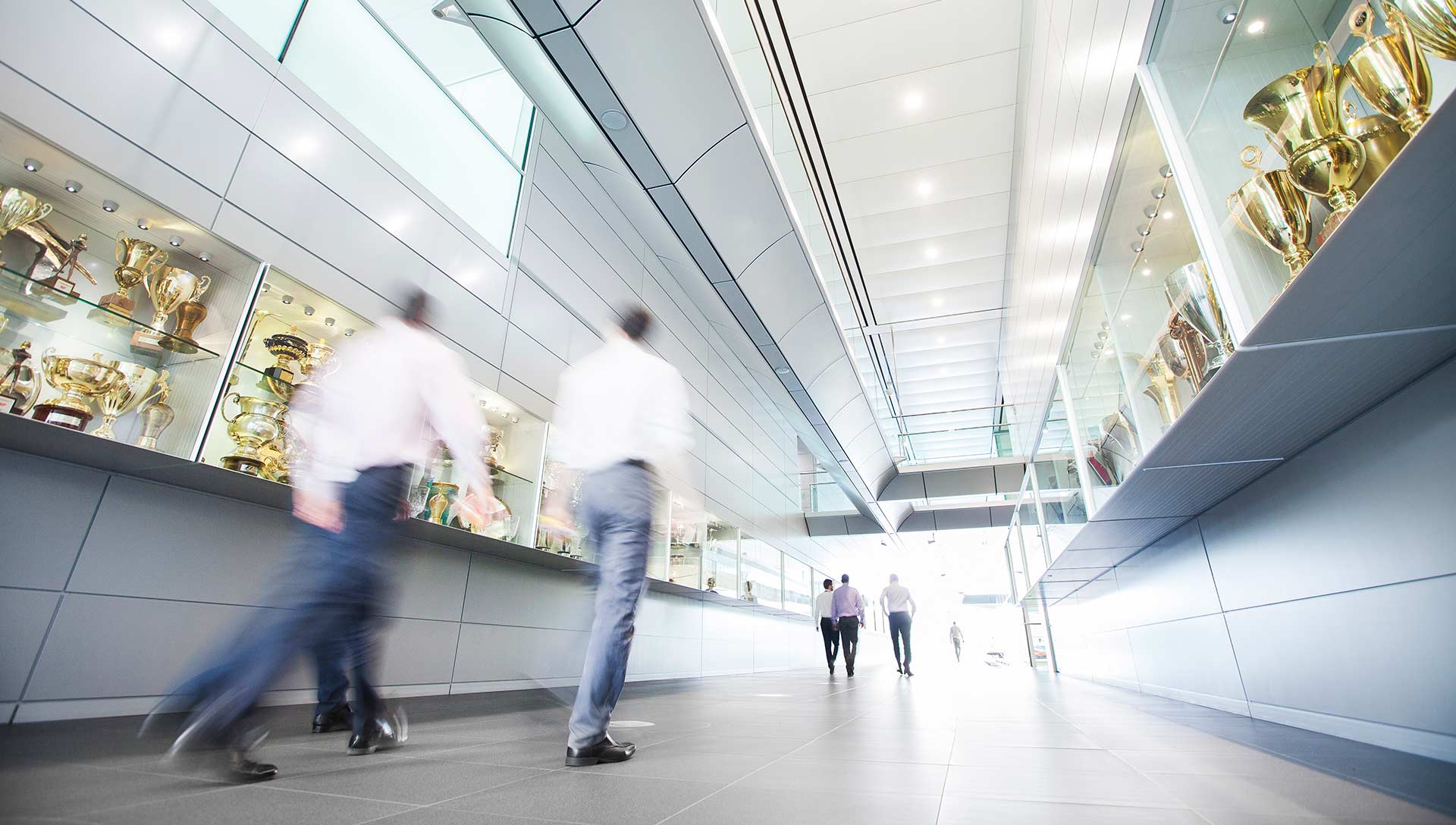
Lights out and away we go?
How Carlos Sainz and Lando Norris improve their reaction times
Read time: 16.1 minutes
The start of a Formula 1 race is pivotal. Get it right and there are places to be gained. Get it wrong and it can be very much the opposite: places can be lost in the blink of an eye, strategic options can be wiped away in a heartbeat and, worse still, your race can be over before you even get to Turn One. Or should that be Turn Two?
With Turn One nothing more than a kink in the middle of a flat-out kilometre run from the start line to Turn Two at the Sochi Autodrom, there’s even more at stake at the start of the Russian Grand Prix. How quickly McLaren F1 drivers Carlos Sainz and Lando Norris react could make a huge difference to their race. But just how do they ensure they have lightning-fast reactions when the revs rise and the lights go out?
We caught up with their respective performance coaches Rupert Manwaring and Jon Malvern – the guys responsible for making sure Carlos and Lando really can think fast – to find the answers.
Reaction
The lights go out and you floor the throttle. What’s so hard about that?
If only it were that simple… You see, the science behind rapid reactions and race starts is a little more complicated than that.
Normal human reaction time is between 0.15 and 0.2 seconds, but that’s only half the story because you can’t really talk about a reaction without considering the specific action that will usually follow it – in this case beginning the process to launch an F1 car off the grid. When you factor this in, an F1 driver’s reaction time at a race start tends to be somewhere between 0.2 and 0.3 seconds. “There’s no point in reacting quickly to something if your actual action is poor, and good reactions for a specific task require motor-learning,” explains Jon.
“The more coordination the movement (action) requires, the harder it will be to achieve a quick reaction time. Getting an F1 car off the line at the start of a race requires complex coordination between a driver’s vision – watching the lights; feel – hands on the steering wheel and clutch paddle, as well as feet releasing the brake and applying the throttle in a controlled manner; and sound – the noise made by the car, namely the engine revs.”
“And training to improve this is not as easy as you might think because there are so many different factors that can influence reaction time,” adds Rupert. “But there are certain things a driver can do to make sure they’re in the best physical and mental state to react as quickly as possible when the lights go out. It’s all about having a routine that gets them into a competitive mindset, in a relaxed and confident way.”
1 | All the gear, right idea
Rupert Manwaring: The first step takes place long before race day: having the right equipment – specifically, the driver’s gloves. A driver needs to have a good feel on the steering wheel. It should be comfortable and there should be nothing between their fingers, glove and steering wheel that's going to impede their ability to launch quickly off the line. At McLaren, it’s something we work closely with Sparco on. There are various things you might play around with, such as how tight the gloves are, the material, and whether the stitching is on the inside or the outside.
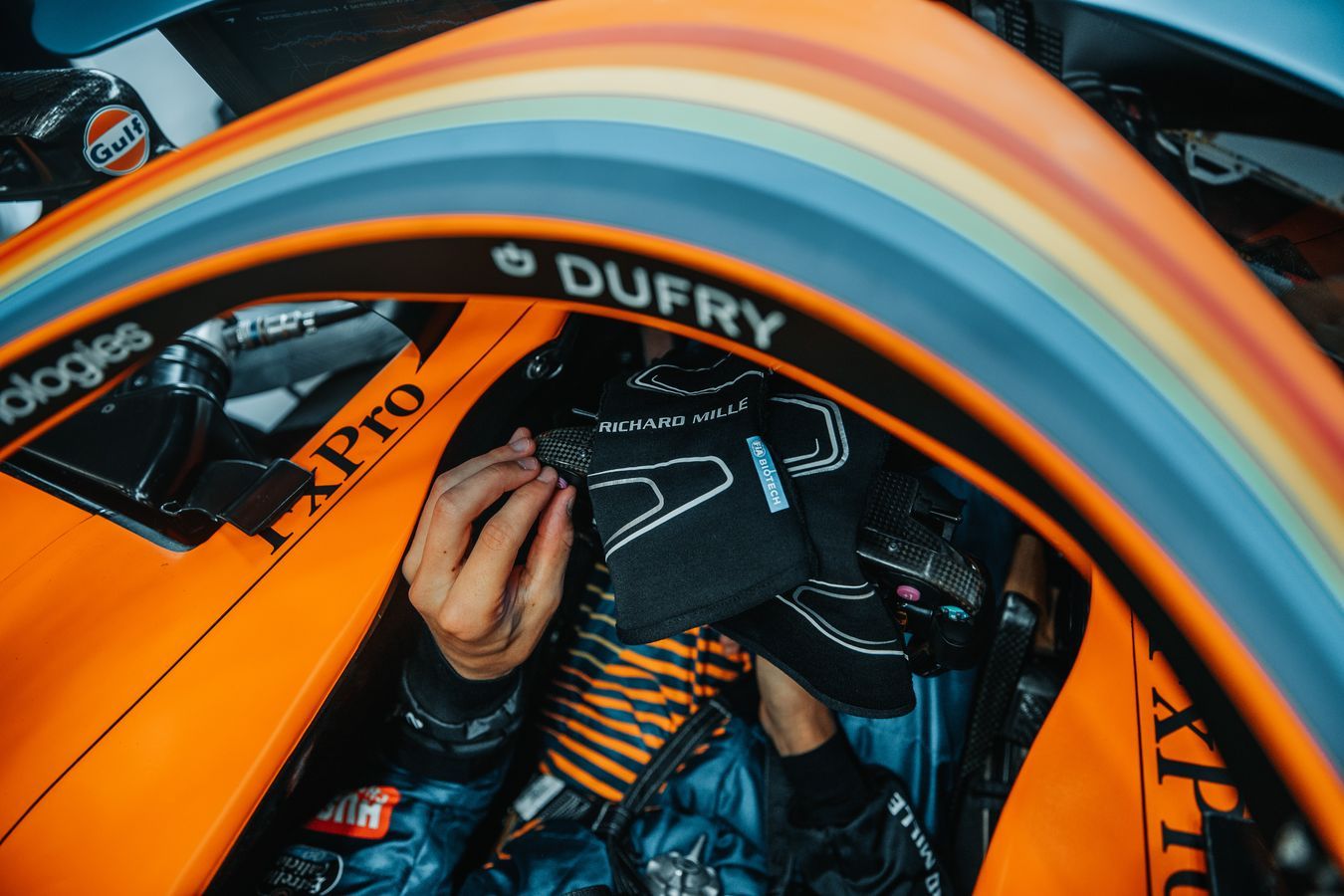
2 | The Last Supper
Jon Malvern: To react quickly to any stimulus you need a healthy and well-functioning nervous system, as well as muscles. A lack of fats can compromise the nervous system because they enable nerve cells to function properly. Meanwhile, carbohydrates are the essential fuel that the muscles and brain need to perform.
RM: Drivers need to fuel up the night before a race, so dinner will have plenty of carbohydrates. But it’s not all about carbs, the meal must be balanced and have, for example, all the minerals they may need. Having a good meal on Saturday night also means not going to bed hungry, which helps with the next step…
3 | Sweet dreams
JM: Sleep improves cognitive performance, memory and learning. Studies have shown that a full cycle of sleep can help you retain 20% more information when learning new tasks. Retaining information is pivotal if a driver wants to make a good start because they will need to remember the amount they need to drop the clutch at the start, how much grip they felt when pulling away during previous practice starts – which will influence how aggressive they can be, and the optimal coordination of the throttle and clutch. The accuracy of physical inputs into the car controls, such as the clutch paddle and throttle pedal, can be improved by up to 42% with a good night’s sleep and, obviously, reaction time can be improved too.

RM: For Carlos, a massage on Saturday night often helps him to get relaxed and have a good night’s sleep. But if you don’t have a sports therapist on hand, the key is to do anything that helps you relax: this could be meditation, reading a book or breathing exercises. About an hour before bed, lights should be dimmed, and you shouldn’t use your phone or any devices that emit blue light because that can affect quality of sleep.
Alcohol is an obvious no-no. Sleeping somewhere familiar also helps: spending a few nights at the same hotel before race day to make sure the bed is comfortable, there are no distractions and the room is the right temperature. There’s some debate over the optimum temperature and it varies from person to person. It tends to be between 18 and 19°C, although Carlos prefers it slightly warmer. In terms of quantity of sleep, we're looking for an absolute minimum of seven hours, but there's a lot of research to suggest that up to nine hours is ideal for performance.
4 | Start your day right
RM: On the morning of race day I will do an activation session with Carlos. It’s a chance to go for a bit of a run and do some exercises that loosen and wake the body up. We’ll also do a mobility session to relieve any tightness in the joints and muscles. By waking the body up the right way and talking through the day ahead – perhaps settling any nerves – you can start the day in a positive frame of mind and feel good.
5 | The most important meal of the day
RM: Breakfast follows the same theme as dinner the night before. Between 09:00 and 10:00 on Sunday it’s all about fuelling the body. A word of warning though, this is not an excuse to eat that extra pancake – or five – at the breakfast table! We’re not looking to overfeed a driver, as this would cause them to feel stodgy and heavy. It’s about getting as much carbohydrates into them that the body can digest.

6 | Central Perk?
RM: As drivers get nearer to the race, they switch from solids to liquids and there are two reasons for this. Firstly, stress hormones, such as adrenaline, are naturally released into the body – making it harder to digest food. And, secondly, the release of sugar into the bloodstream from digesting food can cause blood sugar levels to fluctuate. If a driver experiences a spike and then a sudden dip right before the race, it could negatively affect reaction time at the start.
You want to stabilise blood sugar levels to avoid any peaks and troughs. That’s why the last time Carlos will eat solids is about two and a half hours before the race – it’s often some chicken wraps but he doesn’t tend to eat much of them because the adrenaline has already started to kick in. From then on, Carlos will sip on water and an electrolyte drink.
There’s been a lot of research on whether caffeine improves reaction time and some even suggests it might slow it down. You have to be careful because while it might make you feel alert, if you consume too much it can cause your muscles to tense up. This is not good for reaction times because when you do need to react to a stimulus they will need to relax and then tense up again to perform the desired action.
7 | Not all warm-ups are the same
JM: About an hour before the race it’s time to warm-up. You can do visual exercises that warm-up the muscles of the eye, such as depth perception drills and ball reaction drills. And there’s proprioception, which relies on moving and stretching to calibrate the sensors in your muscles and joints with your brain. Then you move on to exercises that require more speed or force, such as high jumps, long jumps, punching drills and clap press ups.
Next up would be movement specific reaction games – so in the case of responding to lights going out, you would focus on using hands, feet or fingers. And finally, focus – you want to focus on the type of movements you’re going to need to make, and move with speed and intent to get your fast-twitch muscle fibres working. Lando doesn’t do many of these exercises in an intense way when warming up, as he prefers to take a more relaxed approach in his preparation for a race.
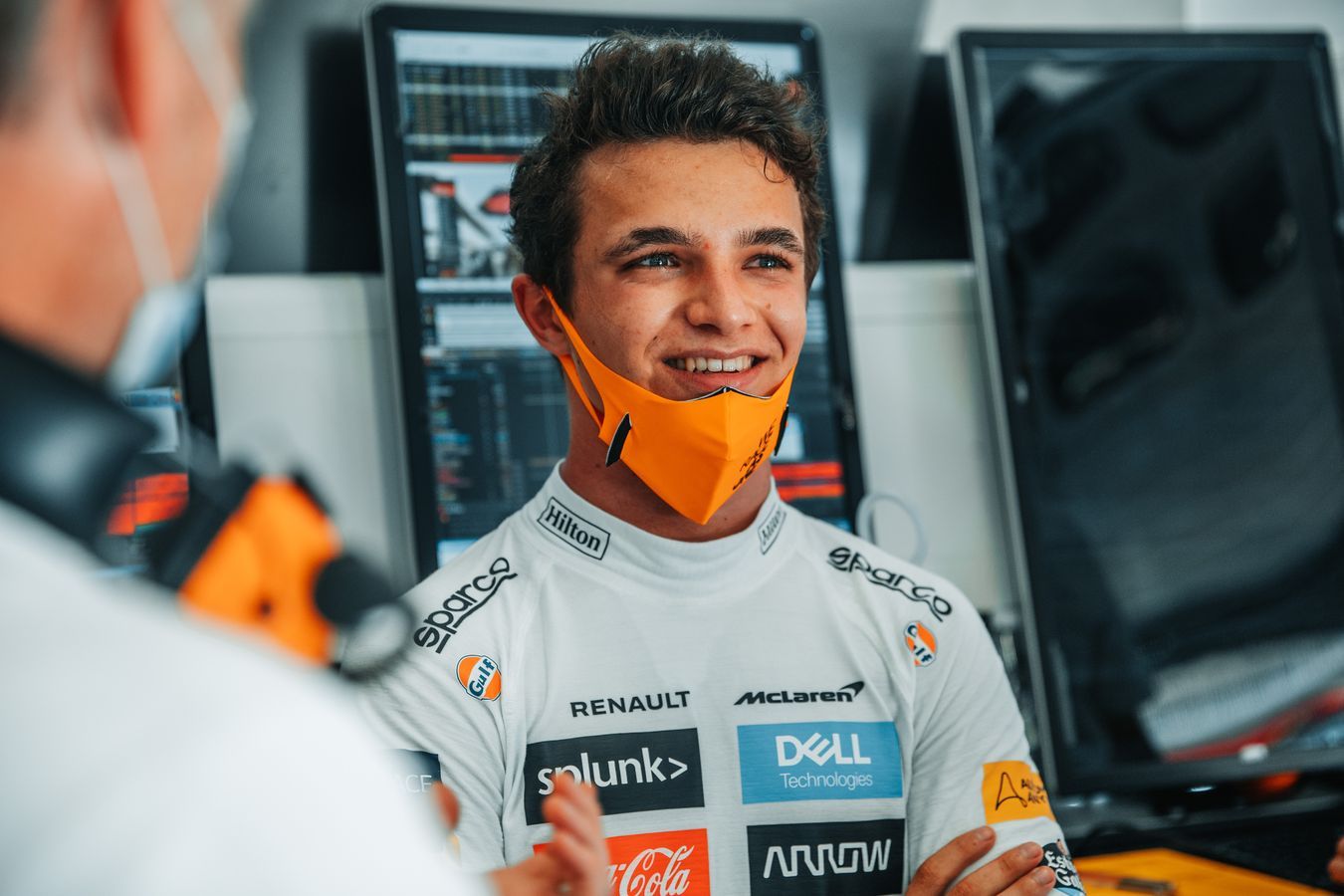
RM: Drills will vary from driver to driver. Lando does a different warm-up to Carlos, but that doesn’t mean one is better than the other. They just differ based on what they need. What both warm-ups have in common is that they’re both designed to get Carlos and Lando in a relaxed and confident state – the right mindset for the race.
Although Carlos will do drills that involve his reactions – this could be me dropping a tennis ball without warning and him trying to catch it or doing some boxing drills – this is more about waking up his vision and sharpening the mind. It’s hard to quantify the effect they have on his reaction time, if any, but doing these exercises prepares his body and mind for the competitive situation he’s about to go into.
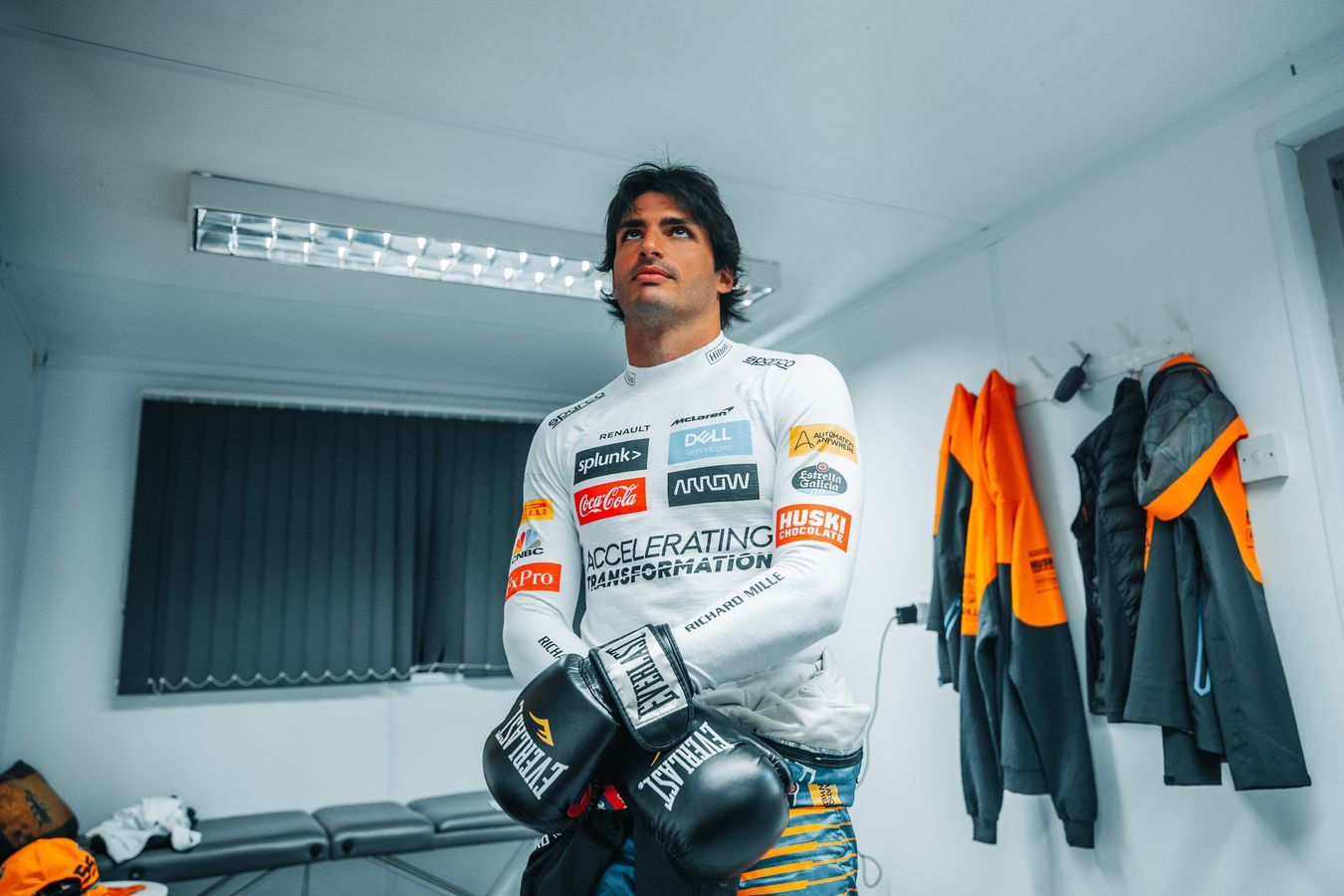
8 | Practice makes permanent
JM: When Lando gets in the car, the engineers will give him a specific ‘clutch target’ for the start of the race. This is the percentage amount that Lando needs to drop the clutch to enable him to get the optimal launch. This target may evolve by small amounts during the race weekend because many variables can change, such as track surface, tyres and fuel load.
We start practicing how to perfect this particular movement and reaction from Friday. When Lando is sitting in the car and waiting to go out for a session, he can set the lights on the dashboard of his steering wheel to light up and go out – as if it were a race start – so he can practice ‘dropping the clutch’ the specific amount that the engineers have asked for.
9 | A Zen state of mind
RM: About 30 minutes before the race, once the drivers have done their laps to the grid, there’s a second opportunity to do some more reaction and reflex style games – for example, another tennis-ball-drop exercise. But we don’t always do games. The most important thing at this point is to make sure that a driver is relaxed and not overthinking things.
It might sound at odds with what you’re trying to achieve, but the best thing you can do is be relaxed. And the most important thing to remember is that there is no one thing that is guaranteed to improve reaction time. What might work for one person, won’t necessarily work for another. But whatever you do, it all comes back to getting into the right frame of mind.
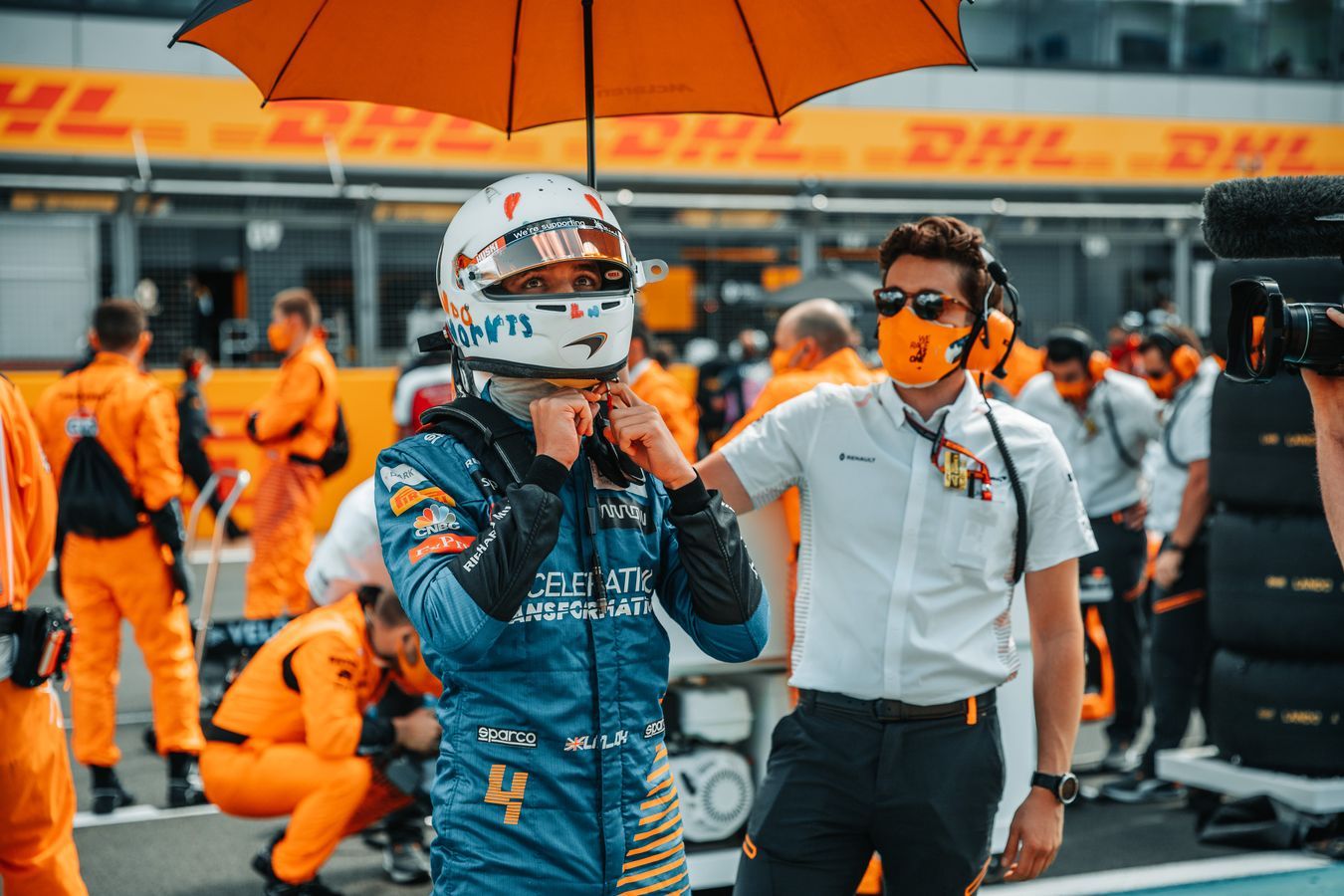
You could think of it this way: every step that Jon and I have just walked you through is a box that needs to be ticked during a race weekend. Once all these boxes have been ticked, it’s possible to have a clear mind because you feel like you’ve done everything you needed to be fully prepared. It’s this feeling that leads to a Zen state of mind, if you like, and that’s exactly what you want to be able to react as quickly as possible when the lights go out.



Everything you need to know for the Russian Grand Prix
Race preview for the 2020 Formula 1 Russian Grand Prix. Hear from Carlos Sainz, Lando Norris, and Andreas Seidl.
An F1 approach to working from home
Carlos Sainz reveals how he's staying in top form
Lando Norris: Second time around
After his debut season, Lando Norris, the McLaren Formula 1 driver, reveals how he aims to have a successful 2020 F1 campaign.
Join the team
McLaren Plus is our free-to-join fan loyalty programme, bringing McLaren fans closer to the team with the most inclusive, rewarding and open-to-all fan programmes in F1 & esports.
Sign up now, or current members can amend their details in the form below if necessary.

